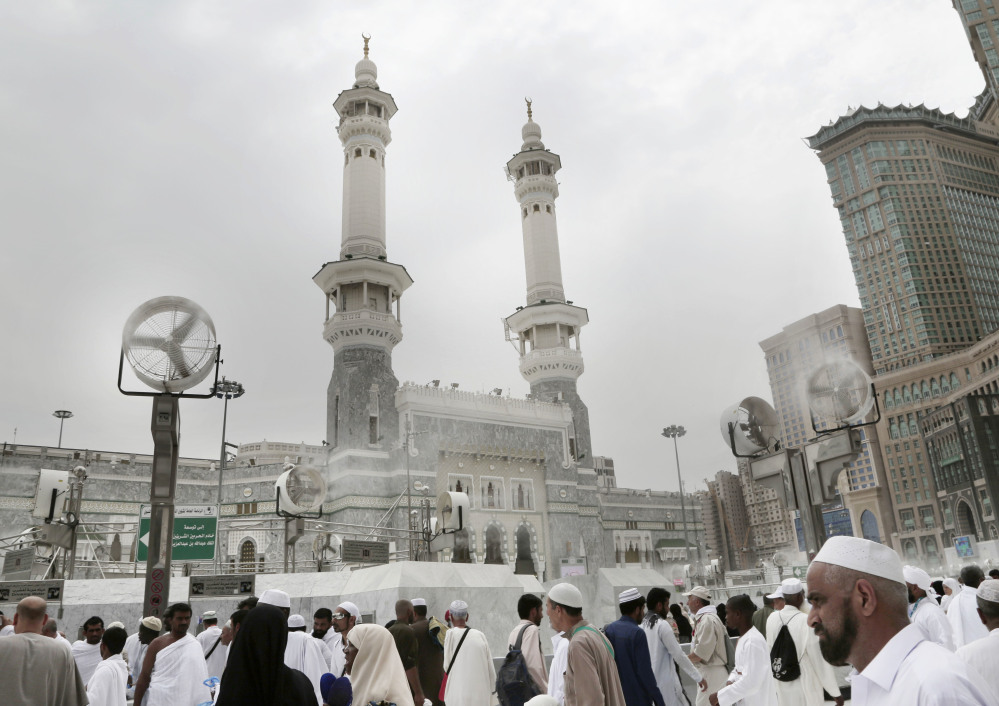MECCA, Saudi Arabia — Close to 2 million people from around the world began performing the first rites of the Islamic hajj pilgrimage on Saturday, which calls for entering into a state of physical and spiritual purity and circling the cube-shaped Kaaba with their palms facing upward in supplication and prayer.
Notably absent this year are Iranian pilgrims.
Last year, some 64,000 Iranians took part in the hajj, but disputes with the Saudi government prompted Tehran to bar its citizens from taking part this year.
Saudi Arabia has blamed Iranian officials for the decision and suggests it was politically motivated to publicly pressure the kingdom. Iran says Saudi “incompetence” caused a crush and stampede during last year’s hajj that killed more than 460 of its citizens out of more than 2,200 who died.
On Friday, thousands of Iranians marched through the streets of Tehran and other Iranian cities to protest Saudi Arabia, chanting prayers against the kingdom’s Sunni rulers after midday prayers.
The hajj is one of the world’s largest pilgrimages. It draws the faithful to the holy city of Mecca and areas around it for five intense days of rituals and prayers aimed at erasing past sins and drawing Muslims closer to God. The pilgrimage is required of all Muslims to perform once in their lifetime.
While following a route the Prophet Muhammad once walked, the rites of hajj are believed to ultimately trace the footsteps of the prophets Ibrahim and Ismail, or Abraham and Ishmael as they are named in the Bible.
Most pilgrims will spend the evening outside Mecca in a valley called Mina that houses more than 160,000 tents.
They will head to an area called Arafat on Sunday for the pinnacle of the pilgrimage, an emotional day of repentance and supplication.
Send questions/comments to the editors.



Success. Please wait for the page to reload. If the page does not reload within 5 seconds, please refresh the page.
Enter your email and password to access comments.
Hi, to comment on stories you must . This profile is in addition to your subscription and website login.
Already have a commenting profile? .
Invalid username/password.
Please check your email to confirm and complete your registration.
Only subscribers are eligible to post comments. Please subscribe or login first for digital access. Here’s why.
Use the form below to reset your password. When you've submitted your account email, we will send an email with a reset code.